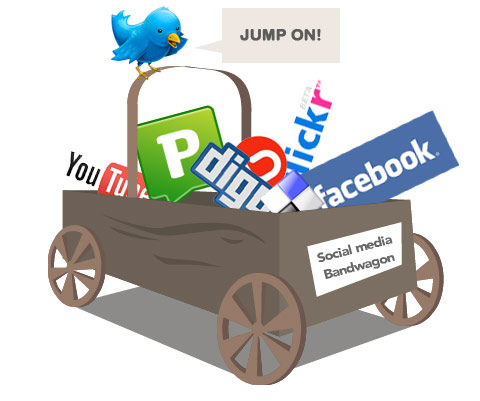New media makes it possible for everybody to make a video and take photo’s, post them online and spread their message to all the corners of the world. This way of spreading information, used to be in the hands of a few powerful organizations. As they were the only one who had the recources, they could charge enormous amounts for this service. (Croteau & Hoynes, 2005: 320). Because of new technologies it is more easy and cheaper for people to create a movie and they can also post them online. Companies no longer need to rely on expensive traditional media for communicating with their target group. Besides that, it is even the question if brands can still reach their target group with traditional media as Television (Himpe, 2006: 17).
First this interesting video of journalist James Surowiecki. He pinpoints the moment when social media became an equal player in the world of news-gathering. Nowadays people tweet, blog, IM, and update their Facebook status. The video takes a look at the event that first showed the world the power of user-created media.
Brands also see this shift and need to adjust their marketing campaigns. The revenues that TV-stations get earn on advertisement-space are going down. Companies will think twice before they create an expensive TV commercial, that won’t get a lot attention from the target group. Instead of using the (expensive) traditional media, they turn to guerrilla actions, events and other controversial ways to communicate with their target group. That will generate the buzz that companies are looking for. Compared to traditional media, it is also cheaper. The consequences of digitization of media is that it is non-proprietary, it can be multiplied, the content can be compressed into very small places, it can be accesses at very high speeds and in nonlinear ways and it can be manipulated far more easily than analogue forms. Especially the multiplying and compressing of content is useful for brands. They can create one message that is available for many people.
No longer do brands need to organize an expensive event for the whole world, you organize an exclusive event for selected people, post some photo’s on internet and let people spread the word (Hospes, 2007: 82). Not good enough? What do you think about a virtual event? If you (or someone you know) are handy with computers you can create a whole virtual world that is accessible for everybody. This does not need to be so expensive, and as the target group is huge, the cost per person reached is lower.
Sounds great right? Well, not for TV Stations. TV-commercials is their main source of income. T,he less commercial time is sold, the less income they have; the less money they have to produce content. But of course, BNN can also use new media. They can create for example a new platform, organize (virtual) events, make programs that involve co-creation and have this sponsored by brands. BNN is a cool brand, they should use this brand-value. They can collaborate with companies with the same values and make money out of this.
BNN needs to keep in mind that it is hard to make money out of social media. Social media is still pretty unexplored. It is a free space for people who want to abuse it, so brands should handle it with care. People are also a bit suspicious about social media. They don’t trust it completely yet. And besides that, it is proven that repeating is the key of advertising. This means that TV-commercials are no longer the main focus in a advertising campaign, but are still important. Together with online and (traditional) offline media they can create a well-structured cross media campaign. This means that TV commercials will keep on existing, but it will no longer be the main source of income for TV stations.
If you want to read more, I would like to refer to an old post on why the Internet is so much better than TV.
Sources
- Croteau, & Hoynes. (2003). Media. Society. California: Sage Publications
- Himpe, T. (2006) Advertising is dead, long live advertising. Amsterdam: BIS Publishers.
- Hospes, C. (2007) Geurrilla Marketing. Zaltbommel: Haystack.
Subscribe to:
Post Comments (Atom)





No comments:
Post a Comment